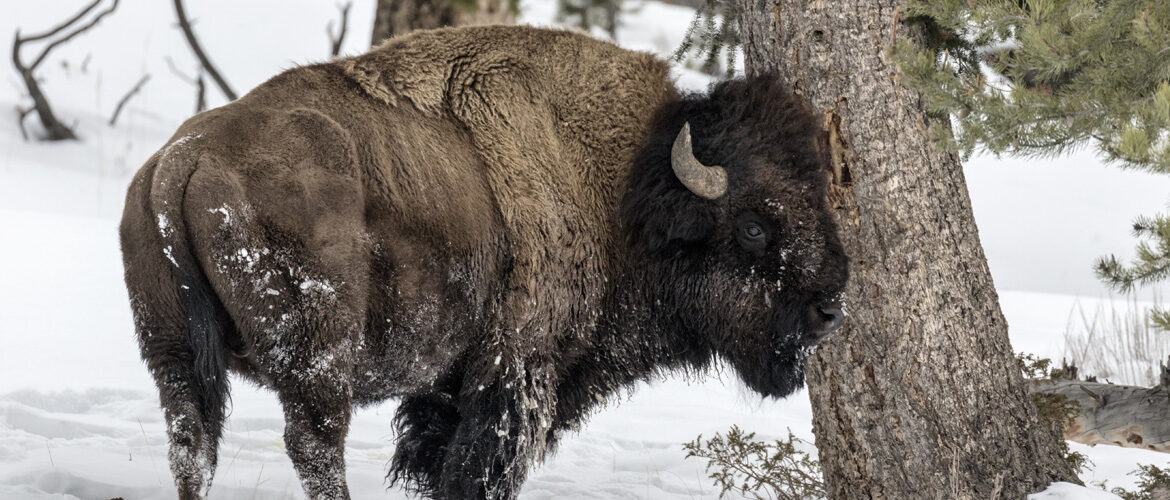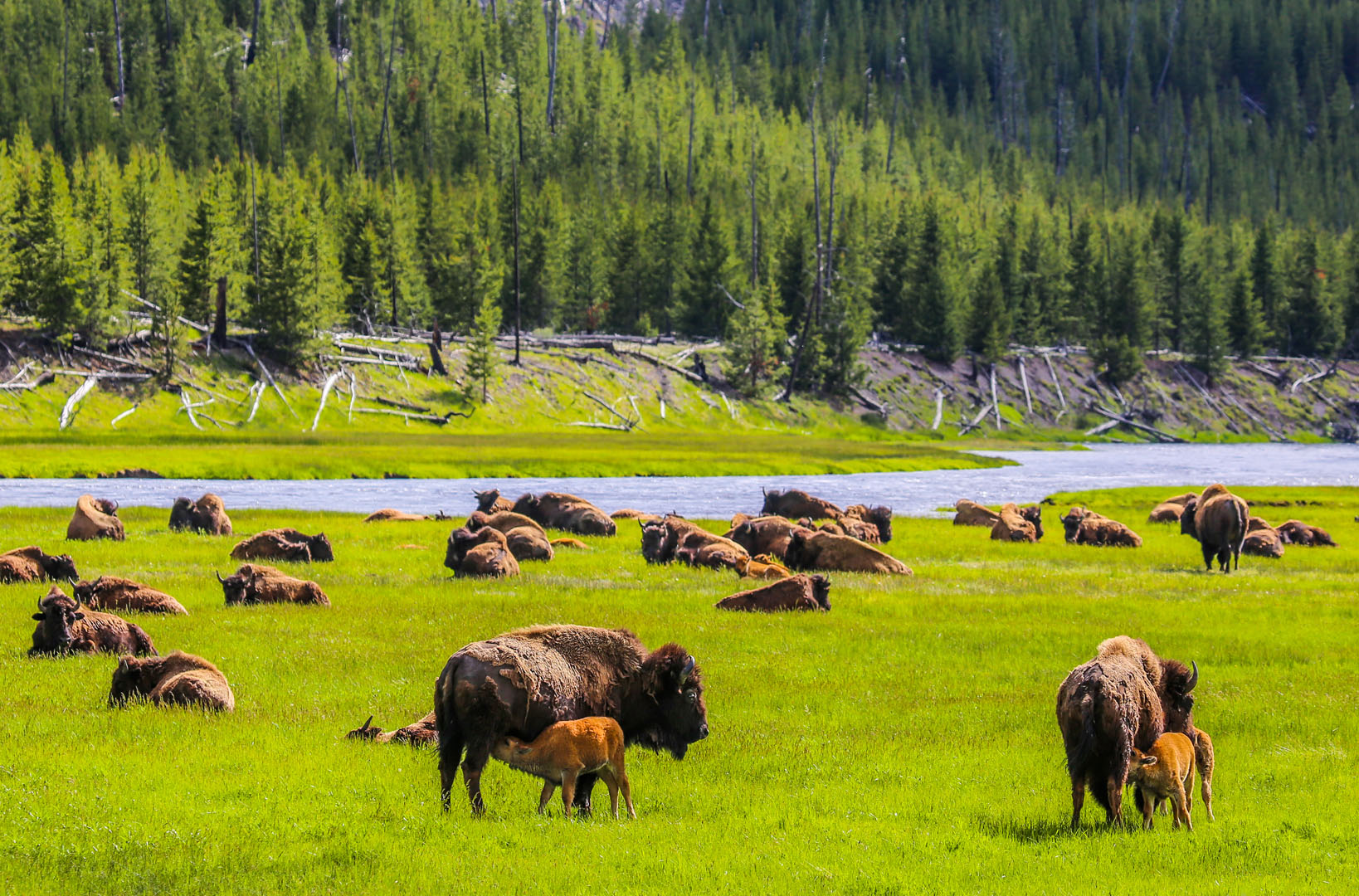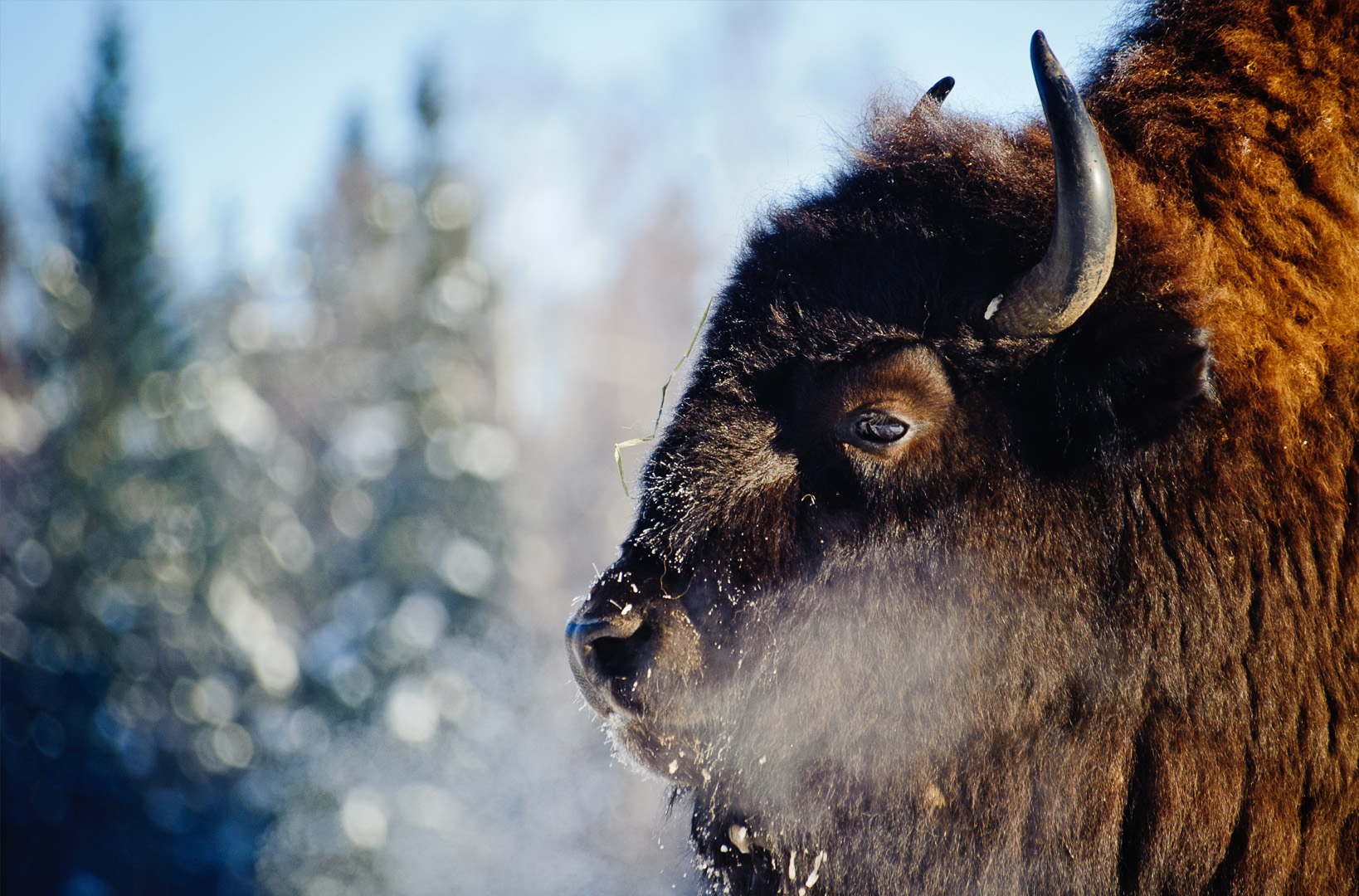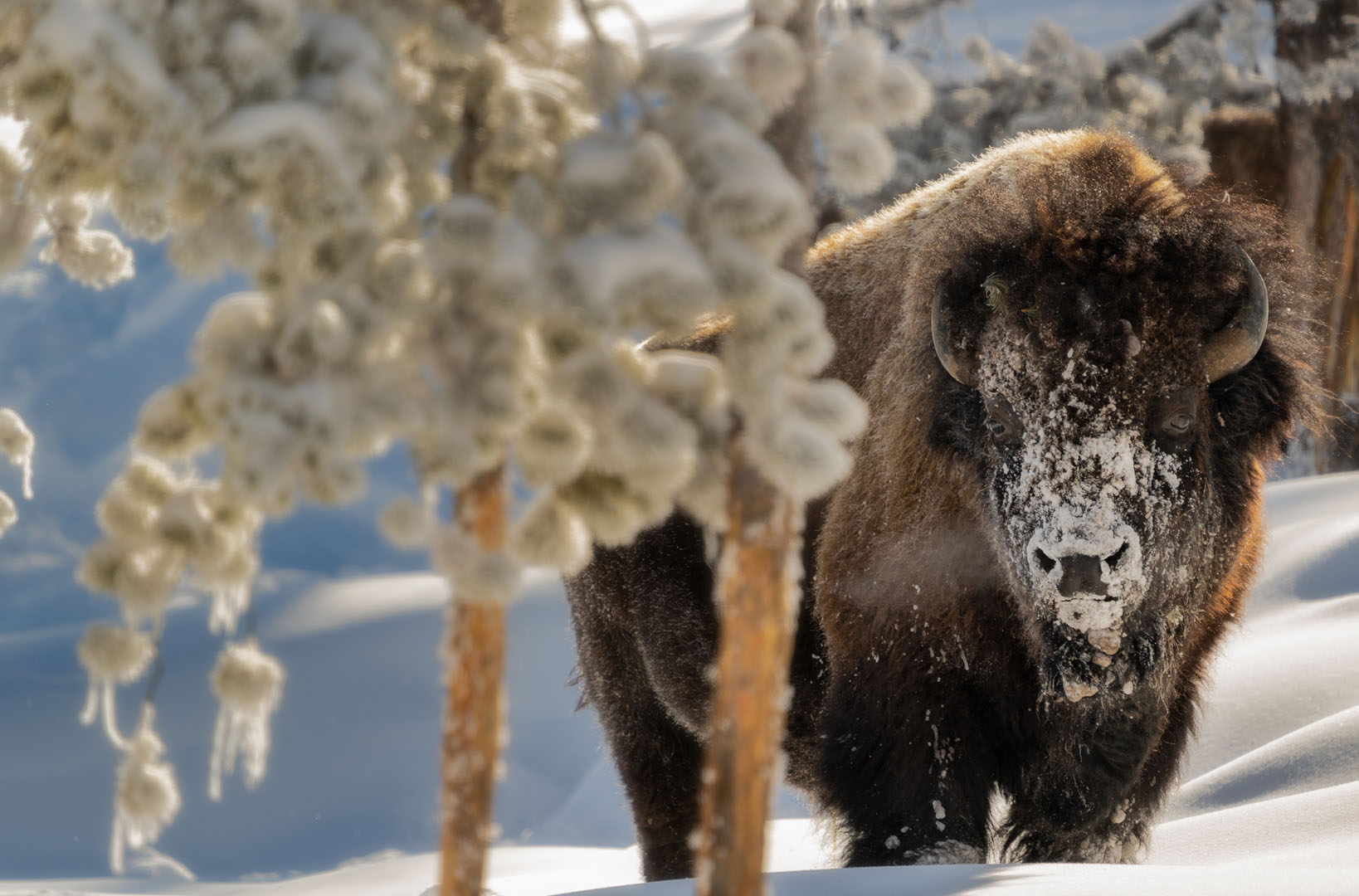$0.00
No products in the cart.

The American bison (Bison bison) is a species of bison native to North America. The animal is sometimes interchangeably referred to as buffalo (a distinct species of bovine) however, generally Bison is the correct terminology. The American bison is one of two species of bison, the other is the European bison. The American bison’s’ historical range by 9000 BC, is described as the great bison belt as the animal once roamed in vast herds. Unfortunately, this special animal nearly became extinct by a combination of commercial hunting in the 19th century and an introduced bovine diseases from domestic cattle.

With a population in excess of 60 million in the late 18th century, the species was down to just 541 animals by 1889. Recovery efforts expanded in the mid-20th century, with a repopulation taking the animals numbers back up to roughly 31,000 animals as at 2019(Aune, K., Jørgensen, D. & Gates, C. 2017. Bison bison).
Generally speaking, there are two subspecies or, “ecotypes” of the American bison which have been described as: the plains bison (B. b. bison), smaller in size and with a more rounded hump, and the wood bison (B. b. athabascae)—the larger of the two and having a taller, square hump. The plains bison has been suggested to consist of a northern plains (B. b. montanae) and a southern plains (B. b. bison) subspecies, which may be considered as bringing the total to three. However, this is generally not supported. The wood bison is one of the largest wild species of extant bovid in the world, surpassed only by the Asian gaur (Diffusion of Useful Knowledge (Great Britain), published by C. Knight, 1835). Among land animals in North America, the bison is the heaviest and the longest, where it is only the second in regards to height to the moose.
There are two living species of bison: the American bison and the European bison. Although the bison if offered referred to as “buffalo”, there are only two types of buffalo: the African buffalo, native to Africa, and the water buffalo, native to Asia(Tikkanen, Amy. “What’s the Difference Between Bison and Buffalo?)
Samuel de Champlain applied the term buffalo (buffles in French) to the bison in 1616 (published 1619), after seeing skins and a drawing shown to him by members of the Nipissing First Nation, who said they travelled forty days (from east of Lake Huron) to trade with another nation who hunted the animals. In English, the term buffalo dates to 1625 in North America, when the term was first recorded for the American mammal. The word buffalo is derived from the French “bœuf,” a name given to bison when French fur trappers working in the US in the early 1600s saw the animals. The word bœuf came from what the French saw as buffalo, referring to the animals living in Africa and Asia. The term bison was first recorded in 1774 and is the correct scientific terminology (“Buffalo Facts”. Animal Facts Encyclopedia),

As bison are the largest mammal in North America, and owing to their size, they have few predators although as history has shown, humans pose a great risk to the animal. Grey wolves, cougars, grizzly bears, and coyotes will also readily predate on the bison. Wolves will generally only take down a bison while in hunting in a pack, but cases of a single wolf killing bison have been reported. Grizzly bears also consume bison, often by driving off the pack and consuming the wolves’ kill. Grizzly bears and coyotes also prey on bison calves. Prehistorically, lions, cave lions, tigers, dire wolves, Smilodon(sabre toothed tiger), Homotherium(scimitar-toothed cat), cave hyenas, and Neanderthals posed threats to bison as a predator
Males of the species are referred to as a bull and the female a cow. The American bison and the European bison are the largest surviving terrestrial animals in North America and Europe. They are typical artiodactyl (cloven hooved) ungulates, and are similar in appearance to other bovines such as cattle and true buffalo. They are broad and muscular with shaggy dark coats of curly hair from the ribs forward. Adults grow up to two metres in height and 3.5 metres in length and up to 2.1 meters in height. The imposing American bison can weigh from around 400 to 1,270 kilograms. And while Sexually mature young bulls may try to start mating with cows by the age of two or three years old, (more if mature bulls are present), they may not be able to actually compete until they reach around five years of age.
Cows can begin reproducing at around 2-3 years of age, giving birth to a single calf each spring, after a 9.5 month gestation period. Calves may nurse for 7-8 months and are weaned by the end of their first year. Bison calves can weigh as much as 31kgs at birth. Although female bison typically do not reproduce until three years of age and can reproduce to at least 19 years of age(“Ungulate preference for burned patches reveals strength of fire–grazing interaction”). Female bison can produce calves annually as long as their nutrition is sufficient, but will not give birth to a calf after years where weight gain was too low. A mother’s probability of reproduction the following year is strongly dependent on the mother’s mass and age (Hamel, Sandra (2012). “Maternal allocation in bison: co-occurrence of senescence, cost of reproduction, and individual quality).
Bison are nomadic grazers and travel in large herds. The bulls leave the herds of females at two or three years of age, and join a herd of males, which are generally smaller than female herds. Mature bulls rarely travel alone. Towards the end of the summer, for the reproductive season, the sexes necessarily commingle.
American bison are known for living in the Great Plains, but formerly had a much larger range, including much of the eastern United States and parts of Mexico. Both species were hunted close to extinction during the 19th and 20th centuries, but have since rebounded due to great efforts. The American Plains bison is no longer listed as endangered, but this does not mean the species is secure. Genetically pure B. b. bison currently number only about 20,000, separated into fragmented herds—all of which require active conservation measures. The wood bison is on the endangered species list in Canada and is listed as threatened in the United States.

Although superficially similar; physical and behavioural differences exist between the American and European bison. The American species have 15 ribs and only 4 lumbar vertebra, while the European bison has 14 ribs and 5 lumbar vertebrae, which is an important distinction Adult American bison are less slim in build and have shorter legs(Tikkanen, Amy. “What’s the Difference Between Bison and Buffalo?”) American bison tend to graze more, and browse less than their European relatives. Their anatomies reflect this behavioural difference; the American bison’s head hangs lower than the European’s. The body of the American bison is typically hairier, though its tail has less hair than that of the European bison. The horns of the European bison point through the plane of their faces, making them more adept at fighting through the interlocking of horns in the same manner as domestic cattle, unlike the American bison, which favours butting. Interestingly, it is reported that American bison are more easily tamed than their European cousins.
Although, now the American bison is the national mammal of the United States of America, the animal has sustained significant exploitation over time at the hands of humans. The uses of the bison for Europeans was mostly centred on the hide, driven by an era of a need for resources. As early as 1772, the Royal Society of London reported that bison leather was “as good a Material for Bookbinding as the hides of Russian Buffaloes” (Binnema 2014). Ironically, examples of books bound in bison leather are not easily found. In 1870, a German company developed a tanning process to convert bison leather into a more pliable and useful leather. Shortly after news of this process was released, uses for bison leather skyrocketed. Due to its durability, bison leather was used for industrial belting, shoes, and clothes for the various armies. Interestingly, as bison hides increased in scarcity, prices did not increase internationally. In fact, prices for leather dropped in the 1880s, which is often attributed to the increased amount of cattle production. This suggests that although bison leather was useful for certain products, the overall market was very small (holdinghistory.org).
The skin of a bison would be stripped by “skinners”, working quickly in the winter to prevent the hide from freezing, and their hands suffering frost bite. And, just as quick in summer to remove the hide before the carcases swelled, both conditions making it difficult to remove. Following 1873, the going rate of 25c per hide removed was more than enough enticement for men suffering economic hardships despite the harsh working conditions. Typically, a skinner would remove 20-30 hides a day in back breaking labour. Of course, without bison on the ground to skin, the skinners would not be taking on such labour, few men were able to complete both tasks at the same time. Notably, men such as John Cook and Wyatt Earp somehow managed this monumental feat which no doubt bolstered to their celebrity status.
Rifle’s had significantly improved over the course of the Civil War with the addition of breech loading technology with metal cartridges, repeaters and (tele)scopes. The West was amass with Henrys, Spencers and Winchester rifles however few of them were capable of taking bison at long range. A letter from John Mooarn to Sharps saw the rapid development of the Sharps Buffalo Rifle which saw a significant turn in the hunters favour (Last Stand. Michael Punke).
Hunters took their time, often cycling between two rifles to ensure barrels were kept cool enough to handle. At a range of around 300 meters, careful observation of the herd would identify the lead cow. The marksman would firstly anchor this lead animal, but not kill it and then methodically work his way through the herd, often to very great effect.
“Plains Indians were born on a buffalo robe and wrapped in a buffalo robe when they died. In between, the buffalo was the foundation of both their economy and their culture. Before the arrival of the whites, buffalo provided for virtually every need” (Barnett).

The oldest confirmed weapon at the time of writing was found in North America in the form of a stone point. Due to the point being stone, the use of be carbon-dating was not possible however, the material along with the point could be dated. The point was found in the bone of a bison antiquus, a 10,000 year old bone from the now extinct ancestor of the modern bison. A truly remarkable find and one that ignites the imaginations of many. Spanning back many millennia, Native American tribes have had cultural and spiritual connections to the American bison.
This link and reliance was the focus of the United States army during the Indian wars who tasked, among others, Major General Phillip Sheridan, a civil war veteran with the gruesome task of “dealing” with the Native Americans. He employed the scorched earth theory, as he had done so often during the Civil war. Many things contributed to the bison’s demise and a contributing factor was that for a long time, the country’s generals, politicians, and the then President Ulysses S. Grant saw the destruction of bison as solution to the country’s “Indian Problem”
Despite the efforts of the American army, the bison was already on decline and the effect on the Native American population was already being felt. Herds became harder to find, in some areas, they’d completely vanished. The buffalo hunters sent two men to Fort Dodge, Kansas, to ask the colonel there what the penalty was if they crossed into the Texas Panhandle and onto reservation land. The Medicine Lodge Treaty had said no white settlers could hunt there, but it was noted that, that’s where the remaining bison had gathered. Lieutenant Colonel Richard Dodge met with the two men, and one is reported to have said “Boys, if I were a buffalo hunter I would hunt buffalo where buffalo are.” The slaughter continued, congress passed the bill to protect buffalo in 1875, but President Grant refused to sign it. The peace treaties had failed, and in that same year, in the infamous Red River War, the U.S. reportedly held back the Comanche, Kiowa, Cheyenne, and Arapaho on the southern plains and forced them into reservations. Now without bison, the U.S. government delivered cattle to some tribes. When the Oglala Lakota in the north traditionally mounted horses and killed the cows in ritual as they had the bison on their hunts. The government stopped sending live cows and instead shipped meat from a nearby slaughterhouse, in retaliation, the Oglala Lakota burned the slaughterhouse down.

The Kingdom of France had controlled the Louisiana territory from 1699 until it was ceded to Spain in 1762. In 1800, Napoleon, the First Consul of the French Republic, regained ownership of Louisiana as part of a broader project to re-establish a French colonial empire in North America, in 1803, the land rights were purchased by the US. The following year, when Lewis and Clark travelled across the US in 1804, they reported seeing “innumerable numbers of buffalo” and estimated there to be at least 10,000 in one herd alone (Botkin 2004). Other sources from a 1850’s document seeing 200,000 buffalo at once. With the vast quantities of buffalo present on the Great Plains, it’s no surprise that the buffalo (or more accurately, the North American bison) has been present in American mythology since before Europeans arrived in the west. Through multiple reintroductions, the species now freely roams wild again in several regions in the United States, Canada, and Mexico, with it also being introduced to Yakutia in Russia
Bison are herbivores, grazing on the grasses and sedges of the North American prairies. Their daily schedule involves two-hour periods of grazing, resting, and cud chewing, then moving to a new location to graze again.
American bison live in river valleys and on prairies and plains. Typical habitat is open or semi open grasslands, as well as sagebrush, semiarid lands, and scrublands. Some lightly wooded areas are also known historically to have supported bison. They also graze in hilly or mountainous areas where the slopes are not steep. Though not particularly known as high-altitude animals, bison in the Yellowstone Park bison herd are frequently found at elevations above 8,000 feet and the Henry Mountains bison herd is found on the plains around the Henry Mountains, Utah, as well as in mountain valleys of the Henry Mountains to an altitude of 10,000 feet.
“In the last three decades of the nineteenth century, an American buffalo herd one numbering 30 Million animal was reduced to twelve. I an era that treated the West as nothing more than a treasure chest of resources to be dug up and shot down, the buffalo was a commodity, hounded by hide hunters seeking to make their fortunes. Supporting them was the US Army, which considered the eradication of the buffalo essential to victory in its ongoing war on Native Americans.” Michael Punke, Last Stand.
Although there is far too much history to cover here, it’s easy to see why history buffs of the American west are naturally attracted to the mighty bison. Although the bison has suffered over a comparative short period of time, the plight of the bison in our era is over, for now. On Monday, May 9th 2016, President Obama signed the National Bison Legacy Act, making the American bison as a national mammal. It’s only the second animal to represent the United States, joining the bald eagle. Hunting opportunities are limited however, available for those willing to play the application/points game or pay for the privilege via a private outfitter. Throughout most of their historical range, landowners have sought restrictions on free-ranging bison. Herds on private land across some states are required to be fenced in and therefore vast opportunities still exist for the harvest of contained bison, given this, hunters looking for opportunities should be sure of the experience they are paying for.